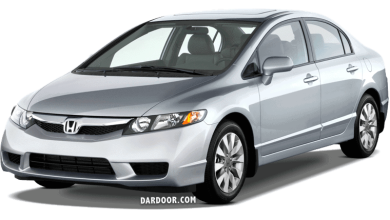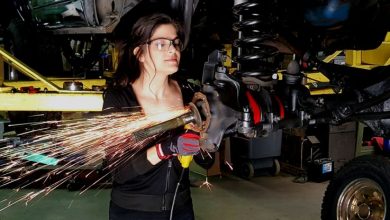
Once little more than a Hollywood-esque pipe dream, autonomous cars became a reality in the 2010s thanks to the R&D carried out by big tech companies like Google. Although they haven’t merged into the mainstream yet and you can’t buy one as of writing, you should know that
self-driving prototypes log millions of miles on our nation’s roads annually.
Pressing the history of self-driving cars into fewer than 10 groundbreaking pillars isn’t easy, but we’ve done our best.
The Autonomous Car Vision Begins
It didn’t take long after the birth of the automobile for inventors to start thinking about autonomous vehicles. In 1925, inventor Francis Houdina demonstrated a radio-controlled car, which he drove through the streets of Manhattan without anyone at the steering wheel. According to a period New York Times report, the radio-controlled vehicle was able to start its engine, shift gears, and sound its horn “as if a phantom hand were at the wheel.”

As an amusing aside, Houdina’s name sounded sufficiently like that of the famous escape artist and illusionist Harry Houdini that a lot of people thought this was Houdini’s latest trick. Houdini visited the Houdina Company and got into a physical altercation, during which he broke an electric chandelier.
John McCarthy’s automatic-chauffeur
In 1969, John McCarthy — who is celebrated as one of the founding fathers of artificial intelligence — described something similar to the modern autonomous vehicle in an essay titled “Computer-Controlled Cars.” McCarthy referred to an “automatic chauffeur” capable of navigating a public road via a “television camera input that uses the same visual input available to the human driver.”
He wrote that users should be able to enter a destination using a keyboard, which would then prompt the car to immediately drive them there. Additional commands would allow users to change the destination, stop at a restroom or restaurant, slow down, or speed up in the case of an emergency. No such vehicle was built, but McCarthy’s essay set the stage for other researchers to work toward.
No Hands Across America
In the early 1990s, Carnegie Mellon researcher Dean Pomerleau wrote a Ph.D. thesis describing how neural networks could allow a self-driving vehicle to take in raw images from the road and output steering controls in real time. Pomerleau wasn’t the only researcher working on self-driving vehicles, but his use of neural nets proved way more efficient than alternative attempts to manually divide images into “road” and “non-road” categories.
In 1995, Pomerleau and fellow researcher Todd Jochem tested their Navlab self-driving car system on the road. Their bare-bones autonomous minivan (they had to control speed and braking) travelled 2,797 miles coast-to-coast from Pittsburgh to San Diego in a journey the pair dubbed “No Hands Across America.”
The Grand Challenge
DARPA announced its first Grand Challenge in 2002. It offered scientists from top research institutions a $1 million prize if they could build an autonomous vehicle able to navigate a 142-mile course through the Mojave Desert.
The challenge was held in 2004. None of the 15 participants was able to complete the course. The “winning” entry covered less than 8 miles in several hours before catching fire. It was a damaging blow to the goal of building real self-driving cars; after news of the fire made headlines, many assumed full autonomy was impossible to reach.
Self Parking gets smarter
While self-driving vehicles still looked like science fiction in the 2000s, self-parking systems began to emerge either as standard or optional equipment (and mostly on luxury cars). They demonstrated that sensors were close to being able to deal with relatively challenging real-world conditions, like parallel parking in a tight space.
Toyota’s hybrid Prius offered automatic parallel-parking assistance in 2003, while Lexus soon added a similar system to the LS, its flagship sedan. Ford launched Active Park Assist in 2009, and BMW followed a year later.
Google in the game
Google secretly launched its Self-Driving Car Project in 2009. Known as Waymo in 2020, it was initially led by Sebastian Thrun, the former director of the Stanford Artificial Intelligence Laboratory and the co-inventor of Google Street View. It took a few years for the company to announce its prototypes had collectively driven 300,000 miles under computer control without a single accident, an impressive feat that caught many off-guard.

In 2014, it revealed an autonomous prototype without a steering wheel, a gas pedal, or a brake pedal; it was 100% autonomous. Waymo is widely hailed as the uncontested leader in self-driving technology.
The big brother dive in
By 2013, car companies including General Motors, Ford, Mercedes-Benz, and BMW were working on their own self-driving technologies. True autonomy proved more difficult to achieve than many assumed, both from a technical and a legal standpoint, and the technology available to consumers in the 2010s was partially automated at best.








